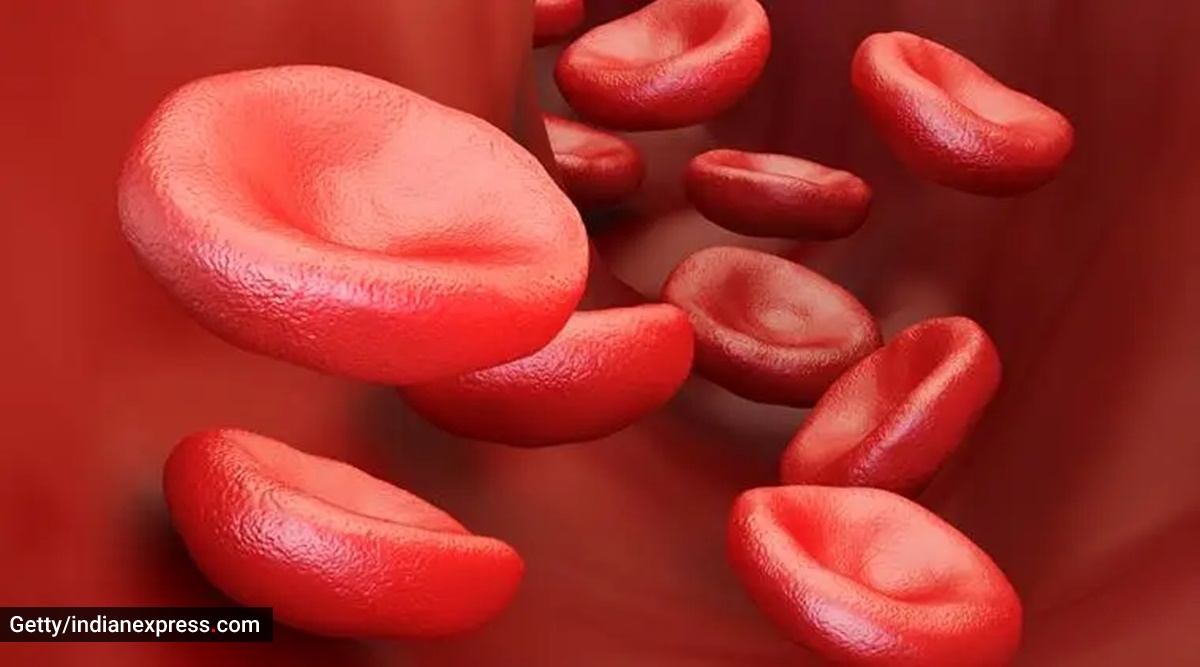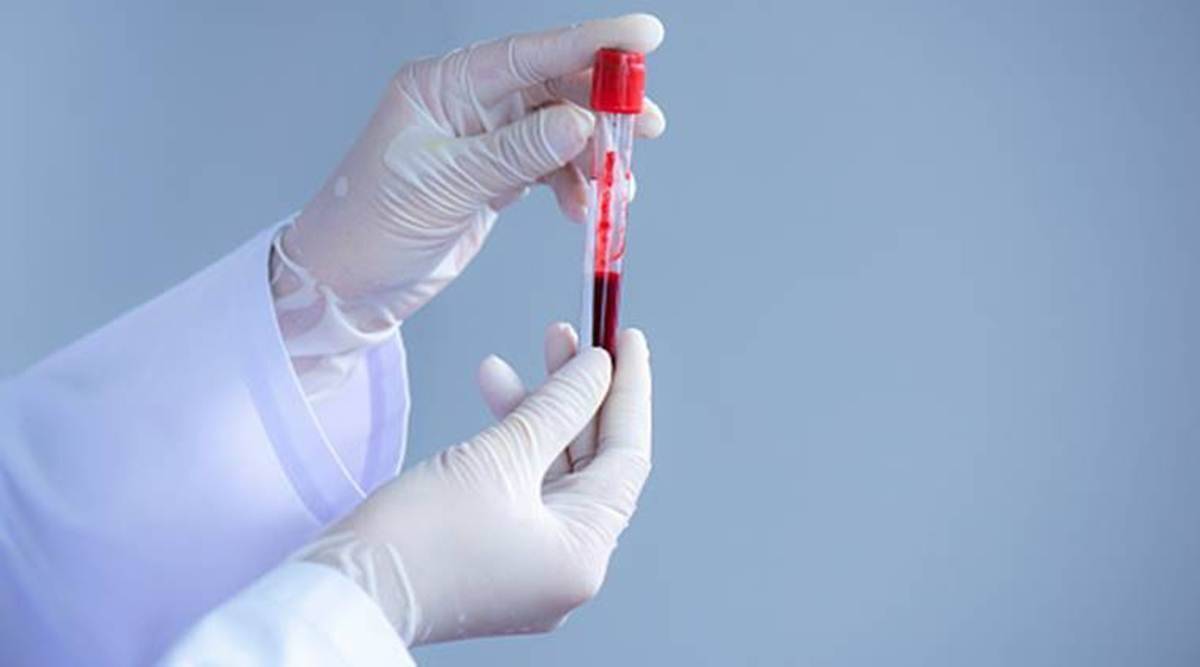 Any healthy individual between the age of 18 years to 50 years can register as a blood stem cell donor (Source: Getty Images/Thinkstock)
Any healthy individual between the age of 18 years to 50 years can register as a blood stem cell donor (Source: Getty Images/Thinkstock) If detected on time, experts say that blood cancer or leukemia is curable — and that you can help, too.
If you are a healthy individual in the age range of 18-50 years, you can become a stem cell donor by registering yourself. This means that if there is a match for a blood stem cell transplant, you can help not only a cancer patient, but also those with any blood-related disorders like Thalassemia.
All you need to know about blood stem cell therapy
Well-known treatments for cancer include chemotherapy and radiation therapy. However, with advances in science and technology, novel target-specific therapies have been introduced that are based on molecular/cellular aspects of the disease. Leading the pack in advanced therapies are stem cell therapy, gene therapy, and immunotherapy, explained Dr Pradeep Mahajan, regenerative medicine researcher, StemRx Bioscience Solutions Pvt. Ltd., Mumbai.
According to experts, several fatal blood diseases including blood cancer and blood disorders like thalassemia, leukemia, aplastic anaemia to name a few can be cured by transfusing blood stem cells derived from a healthy volunteer donor (HLA matched related/unrelated). These healthy cells replace the diseased or depleted blood stem cells in a patient and thereby give the patient a second chance at life. “Blood stem cell donation or bone marrow donation is the only cure for many blood disorders and blood cancers. Blood stem cell donation involves the extraction of stem cells from a matched healthy individual and transplanted to a patient. Patients can opt for it after discussing their diagnosis with the treating doctor,” said Sumati Misra, Head – Counseling and Transplant Centre Management, Datri Blood Stem Cell Donors Registry.
When a blood cancer patient is not able to find a close family match, they start looking at unrelated donor matches. This is where registering in a stem cell donor registry can help, said Atulaa Krishnamurthy, a commercial lawyer, in a Twitter thread as she talked about her experience of donating stem cells after four years of registering. “Bone marrow transplants are used to treat a number of blood cancers, and require near-perfect HLA-type compatibility for donation to be viable. This is very rare, and relatives aren’t always a match, which is why building a large donor registry is key,” she said.
How does a blood stem cell donor registry work?
Every patient has a 25 per cent chance of finding a match within the family. But many patients do not find a suitable donor within the family. In such cases, there is a need to find an unrelated blood stem cell donor or a cord blood unit, said Datri, a not for profit organisation, which also registers blood stem cell donors.
It states that donor registries work towards creating a diverse database where the search of a life-saving donor meets a match. ‘There are over 80 blood stem cell donors registries and more than 30 million registered blood stem cell donors across the globe, with a very few Indians being a part of it. This reduces the chances of finding a possible match for a patient of Indian origin. India is in real need of a functional registry with donors belonging to diverse ethnic backgrounds. A patient is more likely to find a possible match within his/her race/ethnicity, (i.e.) with people sharing the same cultural linguistic, biological traits etc.’.
The website notes that the probability of finding an unrelated matched donor is 1 in 10,000 to 1 in over a million. Datri has a base of more than 4.6 lakh donors but it is less than 1 per cent of India’s population, stated Misra.
How to register?
*Once you have signed up for being a donor, a series of tests are done. They also give a buccal or cheek swab.
*A small sample of blood is collected to verify the HLA typing. HLA is a protein that is part of the DNA and needs to be matched between the donor and patient. Once the report is received from the lab, the donor becomes part of the registry, explained Misra.
*A series of tests are done to ensure the donor is fit and does not have any infectious diseases like Hepatitis B,HIV etc.
*The donor will donate blood stem cells either by PBSC or Bone Marrow Donation methods, as discussed and consented for. The donor will have the right to choose his/her preferred method of donation in consultation with a transplant physician.
How is the match found?
“This registry database is matched when a patient HLA is received from the treating doctor and we share a report of the matched donors with the treating doctor. No identifiable information of the donor is shared. Only the ID of the donor with sex (M/F) and approx. age is shared. The treating doctor requests for the next step and donor counselling is initiated,” Misra told indianexpress.com.
 A small sample of blood is collected to verify the HLA typing (Representational) (Source: Getty Images/Thinkstock)
A small sample of blood is collected to verify the HLA typing (Representational) (Source: Getty Images/Thinkstock) Here’s the process.
“Last month, I got a call saying that I was a match for a two-year-old with a blood disorder (four years after registering!) My Datri coordinator walked me through the two ways of donation: marrow donation, which is surgical, and peripheral blood stem cell donation, which is like regular blood donation++ (your blood is drawn, a machine filters out your stem cells and the rest is sent back into your body). The latter is what I did,” Atulaa shared on Twitter.
Peripheral Blood Stem Cell Donation – The process used for 80 per cent of donations across the world. It is similar to a blood platelets donation. Blood from one arm is let to flow into an Apheresis machine, the blood stem cells are separated and remaining blood components like RBC, WBC, etc are sent back into the donor.
Bone Marrow Donation – This is a traditional method that has been in practice for more than 40 years. Bone marrow is extracted from the iliac crest (hip bone) under general anesthesia and requires one day hospital stay.
“Stem cell therapy in the form of bone marrow transplant has been approved for the treatment of several blood cancers for over three decades. Current advances have brought in mesenchymal stem cells (MSCs) into the picture, which can be used as “vehicles/carriers” to deliver anti-cancer molecules due to their tumour-tropic property,” said Dr Mahajan.
Does a donor need to take medications pre and post donation?
Once Atulaa was confirmed as a match, as next steps, she “underwent a full-body checkup and confirmatory HLA typing to make sure I was eligible for the process”.
1/ This week, I completed the process of donating stem cells via @datriworld. It was straightforward, non-surgical and an overwhelmingly positive experience, and I hope this thread encourages more folks to consider joining the donor registry! pic.twitter.com/xF42euWwok
— Atulaa (@atulaak) February 18, 2022
She was then started on a five-day course of GCSF injections. “Nurse comes home to get my body to produce more stem cells. This can lead to some discomfort – my lower back and ribs hurt, but nothing Dolo couldn’t fix!” On the fifth day, she was flown out to the donation centre. “Madurai in my case, and was hooked up to the apheresis machine through 2 IVs. This can take between 2-6 hours, so prepare to keep your arms still,” she recollected in the same thread.
Datri’s website states that after donation, there is no need for medication. “If the doctor finds any deficiency in the full body checkup reports done before donation (which is shared with the donor), then the doctor may advise.” Also, the donated stem cells are renewed in the body after four to six weeks, said Dr Mahajan.
Sharing her experience, Atulaa stressed, “It was straightforward, non-surgical and an overwhelmingly positive experience. Stem cell donation is simple, has outsized impact, doesn’t have to involve anesthesia and all donor costs are taken care of”.
📣 For more lifestyle news, follow us on Instagram | Twitter | Facebook and don’t miss out on the latest updates!
- The Indian Express website has been rated GREEN for its credibility and trustworthiness by Newsguard, a global service that rates news sources for their journalistic standards.

